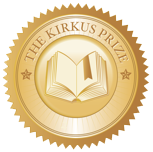Please tell us a little about yourself and Bodies of Water.
My work history includes being an Army nurse, an instructional video writer and producer, the co-founder of a nonprofit supporting low-wealth schools, a young adult librarian, and the challenging fulfillment of teaching English in a public middle school. The seeds of the idea of my story began during my years as a stay-at-home mom in the 1990s. The characters stayed with me, and I revisited, rewrote, and reimagined it for years. The essence lies in a teenage protagonist’s smart and determined quest to unravel their own history, a theme that reflects my belief in young people, and the tendency to underestimate them.
How did you choose the genre of Bodies of Water?
This was easy, not really a choice, but a natural extension of what I love to read and share with others. In adolescence, I immersed myself in books as a way of coping. I still do. I’m drawn to books that speak to both teens and adults for the opportunity they provide for readers of different ages to share ideas and perspectives. My book presents an ethical dilemma without offering neat conclusions, set against the backdrop of the 1980s—a time before the digital age simplified our quest for information.
What was your editing process like?
As a librarian and educator, I was fortunate to have access to a community skilled in the art of critique, and willing to give honest feedback. In one memorable instance, a young relative’s enthusiasm for an early draft led to it being circulated in her classroom—a gesture that proved invaluable. At the point of deciding to self-publish, I engaged a professional editor, ensuring that the manuscript underwent rigorous refinement.
How did you develop your characters?
I’m an unapologetic people watcher, and I listen. I think of my characters as their own people, but I certainly draw from my own experiences and people I know for some characteristics, both admirable and not. The fun part of fiction writing is you can start with something grounded in reality, then turn in any direction the character takes you. When I would question if a teenager could pull off some of the things in my book, I had a particular friend in mind when I thought, “Yes, she could.” Anna, my protagonist, is inspired by my own vivid dreams, yet the direction and depth of her dreamscape are uniquely hers.
How have you built your audience?
Cultivating an audience is an ongoing learning experience. It began with the support of my personal network, extending through word-of-mouth recommendations, engaging book clubs, and a favorable Kirkus review. Now, I’m navigating new strategies to connect with teen readers. It’s an interesting process, after being on the ordering end of book selection for many years, to be thinking of it from the other side, especially as so much in the industry has changed.
Portions of this Q&A were edited for clarity.









































